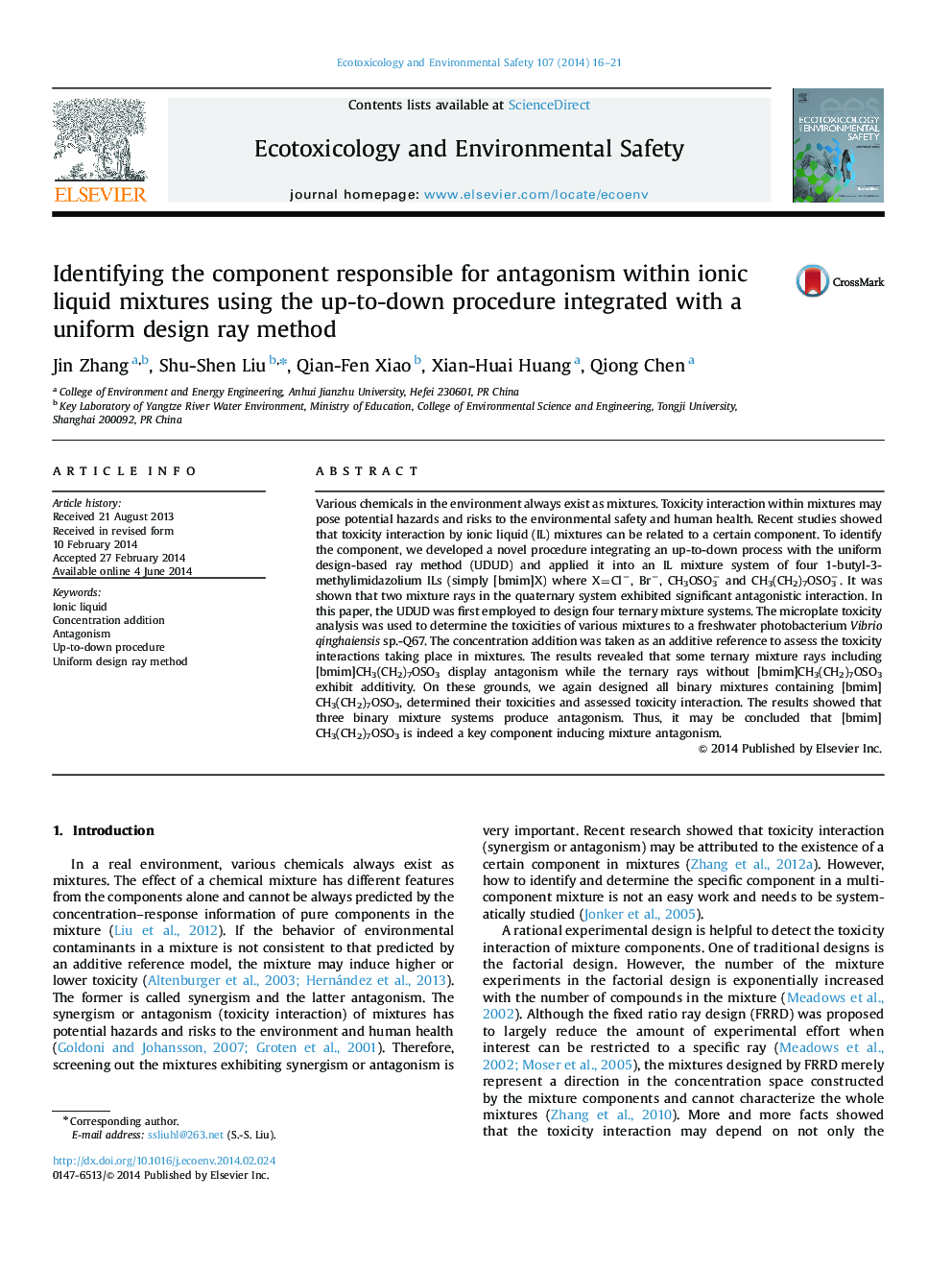| کد مقاله | کد نشریه | سال انتشار | مقاله انگلیسی | نسخه تمام متن |
|---|---|---|---|---|
| 4419969 | 1618956 | 2014 | 6 صفحه PDF | دانلود رایگان |
• A novel procedure integrating an up-to-down process with the uniform design ray method (UDUD) is developed.
• UDUD is used to identify the key component responsible for the toxicity interaction in mixtures.
• The antagonism is mainly induced by the [bmim]CH3(CH2)7OSO3 with a complex anion.
• The strength of antagonism is related to the concentration ratio of the [bmim]CH3(CH2)7OSO3.
Various chemicals in the environment always exist as mixtures. Toxicity interaction within mixtures may pose potential hazards and risks to the environmental safety and human health. Recent studies showed that toxicity interaction by ionic liquid (IL) mixtures can be related to a certain component. To identify the component, we developed a novel procedure integrating an up-to-down process with the uniform design-based ray method (UDUD) and applied it into an IL mixture system of four 1-butyl-3-methylimidazolium ILs (simply [bmim]X) where X=Cl−, Br−, CH3OSO3− and CH3(CH2)7OSO3−. It was shown that two mixture rays in the quaternary system exhibited significant antagonistic interaction. In this paper, the UDUD was first employed to design four ternary mixture systems. The microplate toxicity analysis was used to determine the toxicities of various mixtures to a freshwater photobacterium Vibrio qinghaiensis sp.-Q67. The concentration addition was taken as an additive reference to assess the toxicity interactions taking place in mixtures. The results revealed that some ternary mixture rays including [bmim]CH3(CH2)7OSO3 display antagonism while the ternary rays without [bmim]CH3(CH2)7OSO3 exhibit additivity. On these grounds, we again designed all binary mixtures containing [bmim]CH3(CH2)7OSO3, determined their toxicities and assessed toxicity interaction. The results showed that three binary mixture systems produce antagonism. Thus, it may be concluded that [bmim]CH3(CH2)7OSO3 is indeed a key component inducing mixture antagonism.
Journal: Ecotoxicology and Environmental Safety - Volume 107, September 2014, Pages 16–21
